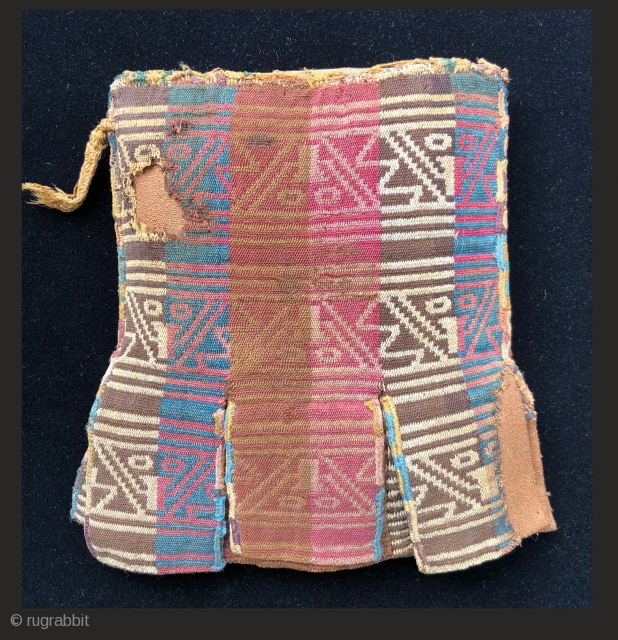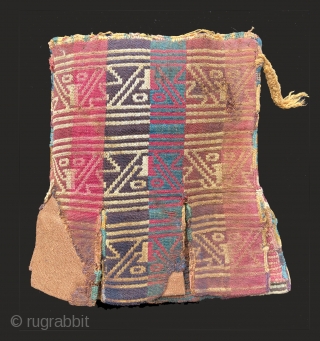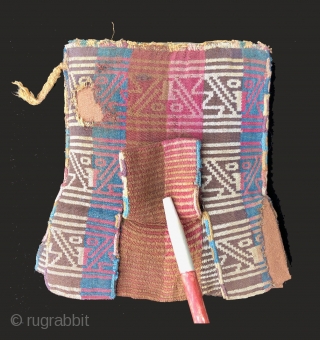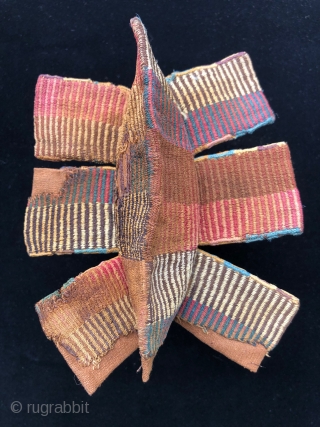Back
Early Pre-Columbian bag with seven compartments. b.c. 200 - a.d. 200. This small bag was made with seven compartments - a large bag sized compartment and six small pockets all woven as one complete weaving. The six smaller pockets at the bottom of the bag are accessed from inside the bag. This technique is sometimes seen in later Wari bags, but this weaving is much earlier than those and is from the Requay Culture - an important, early highland culture in Northern Peru. Requay textiles are exceedingly rare and this piece is a fine, beautifully woven example. The design is geometric, but depicts eyes and profile human facial features that when conjoined make up composite faces. This complex woven structure and composition is remarkable and is something not seen in any other weaving culture in the world outside of this Andean region of South America. The bag has been professionally lined and conserved.
price:
INQUIRE
- Home
- Antique Rugs by Region
- Category
- Profiles
- Post Items Free
- Albums
- Benaki Museum of Islamic Art
- Budapest: Ottoman Carpets
- Gulbenkian Museum
- Islamic Carpets. Brooklyn
- Islamic Textiles. Brooklyn
- Konya Museum: Rugs
- MKG, Hamburg
- MMA: Caucasian Carpets
- MMA: Mamluk Carpets
- MMA: Mughal Indian Carpets
- MMA: Ottoman Carpets
- MMA: Safavid Persian Carpets
- MMA: Turkmen Rugs
- McCoy Jones Kilims
- Ottoman textiles. Met
- Philadelphia Museum
- Rugs and Carpets: Berlin
- Seljuqs at the Met
- TIEM, Istanbul: Carpets
- V&A: Classical Carpets
- Vakiflar Carpets: Istanbul
- Baluch Rugs: Indianapolis
- Gallery Exhibitions
- Jaf an Exhibition
- Alberto Levi Gallery
- Andean Textile
- Christie's London: 2016
- Francesca Galloway
- HALI at 40
- ICOC Washington, DC 2018
- Jajims of the Shahsavan
- London Islamic Week April, 2018
- Mongolian Felts
- Navajo Rugs: JB Moore
- Persian Piled Weavings
- SF Tribal & Textile Art Show 2020
- SF Tribal 2019
- Sotheby's: C. Alexander
- Turkish Prayer Rugs
- Turkmen Main Carpets ICOC 2007













